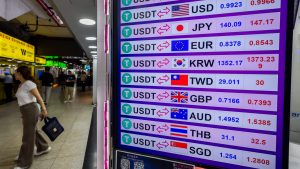Russia Leads Europe in Crypto Adoption with $376.3 Billion in Transfers
Russia has emerged as the leading European nation in cryptocurrency adoption, with transfers totaling approximately $376.3 billion in the latest reporting period. This surge reflects a combination of rising retail interest, institutional participation, and the broader geopolitical and economic context driving digital asset usage. Factors such as financial sanctions, currency volatility, and growing fintech infrastructure have encouraged citizens and businesses to turn to cryptocurrencies as an alternative for cross-border transactions and wealth preservation. Understanding the drivers behind Russia’s remarkable crypto engagement provides insights into evolving global adoption trends and highlights the complex interplay between policy, technology, and investor behavior.
1. Record Crypto Transfer Volumes
Recent data indicates that Russian individuals and institutions have conducted crypto transfers totaling Rs. 376.3 billion, positioning the country at the forefront of European adoption. Analysts suggest that this unprecedented level of activity is fueled by both domestic demand for financial diversification and international interest in leveraging cryptocurrencies for cross-border transactions.
2. Economic and Geopolitical Drivers
Several macroeconomic and geopolitical factors have accelerated crypto adoption in Russia. Currency volatility and inflation concerns have prompted citizens to explore digital assets as a hedge against devaluation. Additionally, international sanctions have restricted access to conventional financial channels, making cryptocurrencies a viable alternative for commerce and remittances. This combination of risk and opportunity has catalyzed adoption across retail and institutional sectors.
3. Growing Retail and Institutional Participation
Retail investors in Russia have increasingly embraced cryptocurrencies for both speculative and practical purposes. Concurrently, select enterprises and fintech platforms have integrated digital asset infrastructure, expanding avenues for payments, trading, and wealth management. This dual engagement—retail enthusiasm complemented by institutional support—has been critical in sustaining high transfer volumes and market activity.
4. Technology and Infrastructure Development
Russia’s fintech ecosystem has advanced rapidly, with crypto exchanges, wallets, and blockchain services becoming more accessible. Enhanced infrastructure has not only streamlined transactions but also improved security and compliance, fostering greater confidence among participants. Analysts note that technological accessibility remains a key driver of adoption, particularly in regions with limited access to traditional banking services.
5. Implications for the European Crypto Landscape
Russia’s surge in cryptocurrency activity signals a broader trend in European markets. Nations observing these developments may experience increased regulatory scrutiny, competitive innovation in fintech services, and heightened attention from institutional investors seeking exposure to digital assets. The Russian example underscores the interdependence between policy environments, technological capacity, and market behavior in shaping crypto adoption.
Conclusion:
Russia’s leading position in Europe, marked by Rs. 376.3 billion in crypto transfers, reflects the convergence of economic necessity, technological access, and market enthusiasm. For investors and policymakers alike, understanding the factors driving this growth is essential to anticipate trends, manage risk, and capitalize on opportunities in the rapidly evolving digital asset ecosystem. While the market offers potential rewards, careful navigation and awareness of regulatory and geopolitical contexts remain imperative for sustainable engagement.




